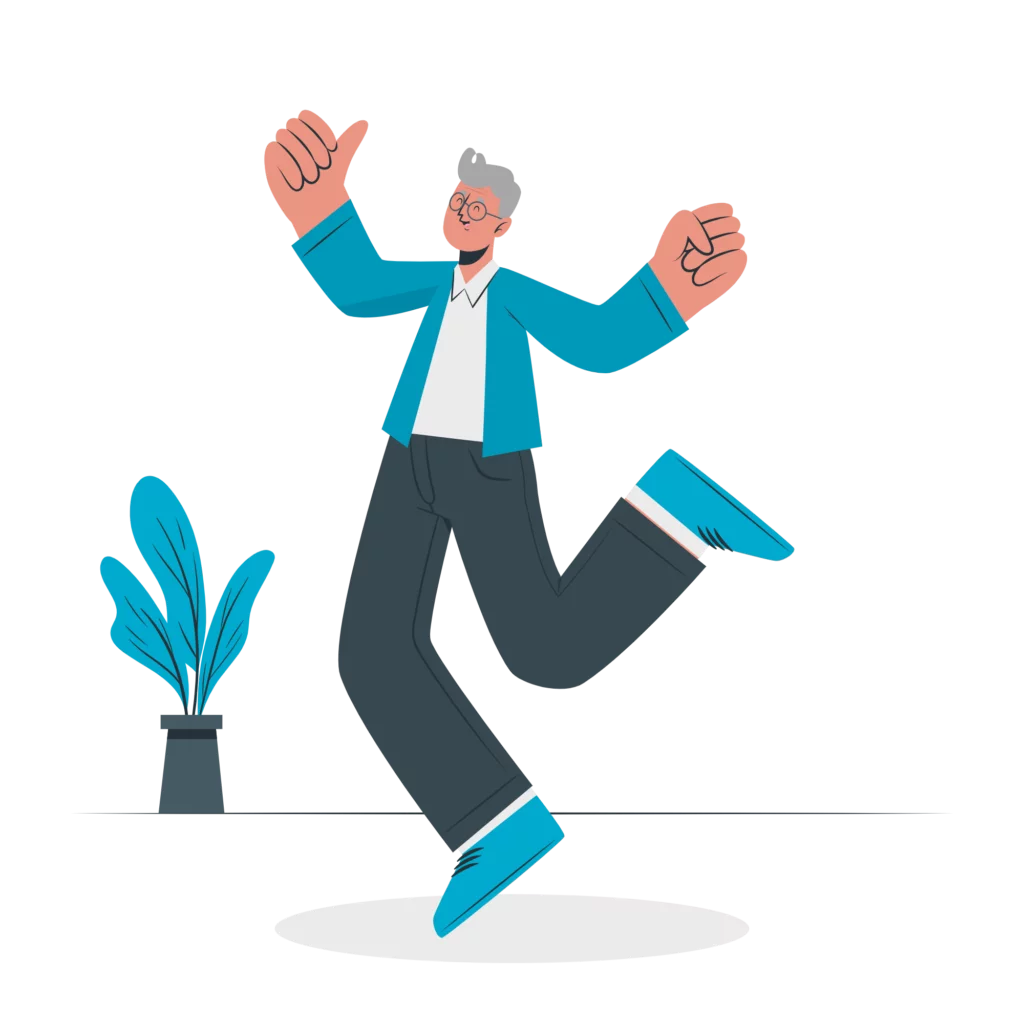Taking action : a skills booster
Gone are the days of 100% formal, instructor-led training. For years, L&D functions have understood the importance of varying and combining the different teaching methods available to them. Taking action is one of them, and it’s essential not to underestimate it!

Remember : in the 70/20/10 model, it is stated that 70% of learning takes place through practice, compared with 20% through exchanges with colleagues and only 10% through training. Where traditional training is therefore limited in its ability to develop new skills and behaviors in an employee, taking action will have a far greater impact.
Why is this ? Because it allows learning to be contextualized. When we take action, we apply one or more skills to a concrete situation. In this way, the employee can develop the skill by practicing it, and can directly observe the impact their changed behavior has had on the situation in question.
Example of a skill: playing with silences when communicating orally.
Taking action : during a meeting, the employee can take the floor and try to play with silences to punctuate their speech. In this way, they can see the benefits (better understanding by their peers, the possibility of taking advantage of silences to think about what to say next, greater ability to convince…) and the difficulties they have encountered, so that they can adjust and perfect their behavior.
3 factors to encourage action
The difficulty for L&D functions is not to perceive the value of taking action, but rather to encourage employees to do so. In 2009, Stanford University’s Brian Jeffrey Fogg proposed a model for understanding what drives a person to adopt a behavior.
According to Fogg, a new behavior will emerge if it meets three prerequisites :
- Motivation : the individual must have an interest in changing their behavior.
- Ability : it’s even more a question of feeling able. The individual must feel capable of implementing change. This capacity is based on five resources: time, money, physical effort, mental effort and routine. The higher the level of motivation, the lower the level of capacity required to take action, and vice versa, the higher the level of capacity, the lower the level of motivation required.
- The trigger : this can be a facilitator, a spark or a signal that increases simplicity and/or motivation.
Personal example : an individual wants to run three times a week to improve their physical condition. This is their motivation. Their ability to do so will be linked to the physical effort and time required. As a trigger, they might, for example, bring his sports equipment to their office so that they can think about running three times a week at lunchtime.
A professional example : an employee wants to be more effective when chairing meetings. This is their motivation. To take action, they need knowledge and skills on the subject, and they need to think about doing so when they finds themselves in the corresponding situation.
A trigger could be to prepare a template for a presentation aid for your meetings, in which the last slide is called “Next steps” and includes fields to fill in to indicate who should do what at the end of the meeting.
A way to anchor post-training skills
As we have just seen, capability is one of the three factors that encourage people to take action. In cases where action is used to develop new skills, capability can come from the training itself. It is during training that the employee learns new concepts, acquires theoretical knowledge, or even practises through simulations.
Following training, the transition to action should therefore be encouraged and facilitated in order to ensure the transfer of skills to the field, and to anchor the learning acquired in the long term. Indeed, if the training followed by the employee is aligned with the skills required for their job, then they should encounter professional situations in which they need to call upon the skills acquired during training.
This brings us back to our three factors :
- Motivation : to be more comfortable, more competent, more efficient
- Ability : the knowledge and skills acquired during training
- Trigger : the corresponding professional situation
And to anchor, you need to repeat. The advantage of moving on to action is that employees can rehearse (practice) as soon as they encounter the situation in question. In this way, they can adjust their behavior, develop the associated skills and anchor them for the long term. L&D can boost return on learning!

What about AFEST ?
As a reminder, AFEST stands for Action de Formation En Situation de Travail (on-the-job training action). What’s the difference between action and AFEST ? It’s a fine line, but an important one: action-based training enables skills to be developed by applying them in real-life situations, but without the action necessarily being formalized and monitored.
AFEST, on the other hand, is a form of action-oriented training, but it needs to be framed. Firstly, it is included in training and skills reference frameworks, the aim being to be able to clearly identify it (in the same way as traditional training content), and to link it to the skill or skills it is designed to develop.
Secondly, AFEST is contextualized and deployed with the right people in the company. In fact, two employees who need to develop the same skill, but who don’t work on the same day-to-day basis, won’t be able to carry out the same AFEST. The AFEST must be adapted to the employee’s job, missions and daily routine.
Finally, the success of the AFEST is measured. The system used must enable feedback to be collected on the successful completion of the AFEST. When the AFEST is properly managed, it brings value to the company. Unlike traditional training, the training action is carried out in a work situation: this means that the employee learns and creates value at the same time.
Moving to “micro-action” with Domoscio
With the LOCK solution, the transition to action takes the form of micro-actions pushed to the employee via an application. Unlike an AFEST, which usually lasts at least half a day, a micro-action is like a challenge that the employee can carry out in just a few minutes, in order to practice a particular skill. In this way, the action becomes part of the work flow, which is more reassuring and engaging for employees who are already caught up in their daily tasks.
Of course, performing a micro-action once will not necessarily lead to the acquisition of the corresponding skill. It is through the repetition of micro-actions that the employee will anchor the skill in a lasting way. To achieve this, LOCK’s algorithm intelligently spaces out the micro-actions, taking into account the profile and need of each employee.
LOCK enables L&D functions to create, via an authoring tool, micro-actions linked to the skills to be developed, in order to roll out campaigns to employees. In designing a micro-action, we find the three Fogg factors:
- Motivation : the action is linked to a skill and, if necessary, to contextual elements enabling the employee to understand the benefits of carrying out the action. For example: to feel more at ease when carrying out a task, to be better organized when teleworking, to be better perceived by colleagues…
- Capacity : you have two options. If the micro-action is used post-training, the employee should have the basics to feel capable of carrying it out. If the micro-action is used as a “training-action”, it is possible to integrate micro-learning elements: for example, a video to provide the employee with theoretical knowledge.
- Trigger : the application (web or mobile, depending on the employee’s usage) sends intelligent notifications when the employee has a new micro-action to carry out, or when they are behind with one or more actions.
Latest news
Our latest articles about the topics: learning, science and Domoscio's news.